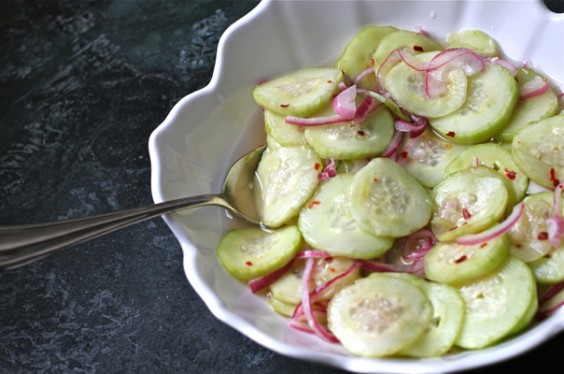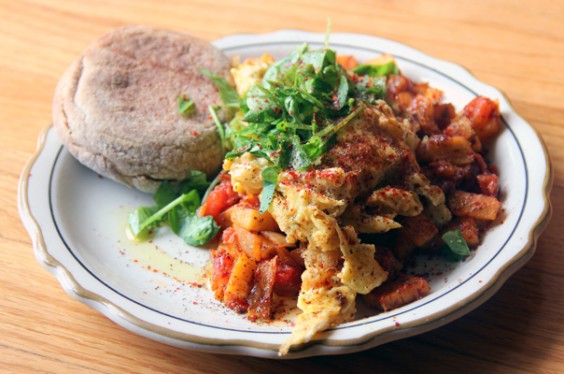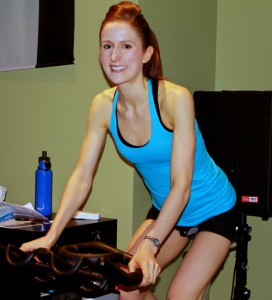We could spend a lot of time fussing about who invented the ice-cream sandwich and when. Or we could get on with it and make some. For the Fourth of July _ and the rest of the summer.
You could use your ice-cream maker to make the cool stuff at home, with coaching from Tessa Arias‘ book "Cookies & Cream: Hundreds of Ways to Make the Perfect Ice Cream Sandwich" (Running Press, $18). Maybe her recipe for strawberry cream cheese or caramel chocolate swirl? Or a cookie from her dozens of recipes _ maybe salted macadamia nut or bacon chocolate chip?
Don‘t have an ice-cream maker? No problem. Just sub premium ice cream for the homemade, as Donna Egan does in "Ice Cream Sandwiches: 65 Recipes for Incredibly Cool Treats" (Ten Speed Press, $16.99). Her book offers lots of ice-cream recipes but also ideas for doctoring purchased ice cream, such as swirling butterscotch sauce into vanilla for smooshing between snickerdoodles.
So get creative. Mix and match cookies with ice creams. Maybe customize plain ice cream with mix-ins. Scoop ice cream on a cookie. Top with another. Enjoy. We‘ve got a cookie recipe to get you started, plus plenty of ice-cream-sandwich-making tips.
___
COOKIES
Pick a favorite cookie recipe. Drop cookies are easy to work with, says Arias, who uses a 2-tablespoon, spring-loaded ice-cream scoop, then rolls the scooped dough in her hands to smooth before flattening slightly and baking. Try: chocolate chip, oatmeal, peanut butter or gingersnap cookies.
Egan uses brownies (chocolate or butterscotch baked in larger pans so they‘re thinner), plus madeleines, meringues and coconut macaroons.
Or purchase good-quality cookies.
ICE CREAM
Choose a premium ice cream or gelato (Haagen-Dazs Limoncello, Ben & Jerry‘s Chocolate Peppermint Crunch _ you get the idea).
Choose a flavor that complements the cookie. A few ideas: coffee-flavored ice cream with cinnamon cookies; lemon with shortbread cookies.
Use two small scoops of different, but complementary flavors of ice cream, says Arias.
MIX-INS
Choose a plain premium ice cream (vanilla, chocolate, coffee). Then soften 1 quart in the refrigerator for 10-15 minutes. Turn into a bowl, then use a knife to swirl in about 1/2 cup of mix-ins. Maybe coffee ice cream plus caramel sauce and mini-chocolate chips. Or vanilla ice cream with seedless raspberry preserves and chopped toasted almonds.
Choose one or two mix-ins from these categories:
Sauces: Caramel, fudge, seedless fruit preserves
Crunch: Toasted nuts (pecans, almonds, hazelnuts, peanuts, walnuts)
Sweet: Chocolate chips, coconut, coarsely chopped candies
DECORATE
Dip edge of finished sandwiches in melted chocolate. Roll in decorating sprinkles, crushed candies, tiny chips (chocolate, butterscotch, peanut butter), coconut, chopped nuts. Arias suggests: crushed pretzels, crumbled bacon.
Wrap frozen sandwiches in cooking parchment or food-safe decorative paper, says Arias, and tie with raffia or ribbon.
FREEZE
Freeze prepared sandwiches an hour or two to firm.
For longer storage, wrap in plastic wrap. Store up to a week.
To serve, let stand at room temperature 5 to 10 minutes to soften slightly.
___
COCOA COOKIES
Prep: 20 minutes
Bake: 9 to 10 minutes per batch
Freeze: 1 hour, 30 minutes
Makes: About 18 cookies, enough for 9 sandwiches
Adapted from "Cookies & Cream," by Tessa Arias. The dough is somewhat sticky; we found it easier to handle after chilling it for 30 minutes.
1 cup plus 2 tablespoons flour
1/4 cup plus 2 tablespoons unsweetened Dutch-process cocoa powder
3/4 teaspoon baking soda
1/2 teaspoon fine sea salt
1 1/2 sticks (12 tablespoons) unsalted butter, at room temperature
3/4 cup sugar
2 large eggs
1/2 teaspoon vanilla
Heat oven to 375 degrees. In a medium bowl, sift together flour, cocoa, baking soda and salt. In a separate bowl, beat butter and sugar with an electric mixer at medium-high speed until smooth and well combined, 1-2 minutes. Beat in eggs and vanilla. On low speed, gradually add flour mixture; beat until combined. Refrigerate, 30 minutes.
Drop 2 tablespoon-size balls of dough onto parchment-paper lined baking sheets. Slightly flatten each. Bake 9-10 minutes, rotating sheets halfway through baking. Cool on baking sheets 5 minutes; transfer to wire racks. Cool completely. Freeze cookies until firm, at least 1 hour.
To assemble, top 1 cookie with a scoop of slightly softened ice cream. Top with another cookie. Gently press down to form a sandwich. Wrap the sandwich in parchment or wax paper; freeze immediately. Repeat with remaining cookies. Freeze at least 1 hour before serving.












